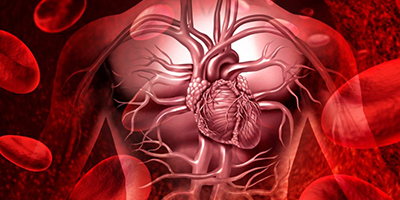
EP Study
Medical Specialities / EP Study

FAQ
Cardiac diseases can be broadly divided into 3 categories.
- Coronary Artery Disease (Diseases affecting blood supply of heart)
- Structural Heart Disease (Diseases affecting structure of heart like valves, septae, pericardium, muscles)
- Cardiac Conduction Diseases (CCD) (Diseases affecting electrical system of the heart )
Cardiac electrophysiology is a specialized branch that deals with the disorders of electrical system of the heart. There is no age group that is spared and rhythm disorders can affect unborn fetus to elderly in the 9th decade requiring care of electro physiologist.
The symptoms are mainly palpitations- where patient is aware of his own heartbeat, which can be very fast, regular or irregular. Abnormal heartbeats can also lead to feeling of missed beats. Patients can have episodes of blackout and fall sustaining injuries. Patient can develop shortness of breath or angina*. Certain arrhythmias# are life threatening and sudden death can be the first presenting symptom. Some arrhythmia puts patients at higher risk of stroke.
* Angina - A type of chest pain caused by reduced blood flow to the heart. # Arrhythmia - Improper beating of the heart, whether irregular, too fast or too slow.
First step is to diagnose the rhythm problem. There is a wide variety of rhythm problems, many of them which are benign and require treatment just to improve quality of life and others which put patients at high risk of sudden death, Cerebro-vascular stroke and heart failure. The treatment has to be individualized and involves medicines, DC cardio version, RF ablation and implanting electronic devices.
RF ablation is treatment of choice in majority of arrhythmia since it is curative in majority and palliative in others by reducing the burden of arrhythmia. It also becomes treatment of choice because the drugs available to treat arrhythmia are not very effective and having lot of side effects. Radio waves are used to heat and destroy the tissue of heart that is causing rhythm problem. This energy is delivered through the catheter inserted via vein of lower limbs. With use of 3D mapping we can treat complex rhythm problems with possible outcomes.
3D mapping is a specialized way of creating map of an arrhythmia by using electromagnetic field to localize the catheter tip. It requires specialized machine and catheters revolutionizing the treatment of most complex rhythms like AF (Atrial Fibrillation) and VT (Ventricular Tachycardia)
AF is one of the most common rhythm disorder in which the upper chambers of the heart, called atria beat at very fast rate up to 600bpm in uncoordinated fashion. Rather than one single wave front multiple wave fronts travel in the atrial chamber leading to high rate of lower chambers producing palpitation, angina, heart failure and episodes of blackout. Clots may be formed in dysfunctional atria, which may produce stroke.
AF is the most common arrhythmia, it’s incidence increases with age. 1 in 4 individuals after 40 years of age will develop AF. Almost all heart problems can lead to this electrical problem, which includes previous heart attacks, valvular problems, heart surgeries, and cardiomyopathies. Also high BP, Diabetes, Obesity, Thyroid problem, Lung problems can have AF.
Treatment of AF is highly individualized. It depends upon patient’s symptoms, patient’s risk of developing stroke in future & underlying medical and cardiac condition. Treatment ranges from heart rate control, rhythm control, anti-coagulation and RF ablation along with lifestyle modification. Unfortunately, majority of these patients are under treated requiring multiple hospital admissions, and some of them end up having stroke.
VT is a rhythm disorder in which very fast rhythm originates from lower chambers i.e. ventricles. VT when associated with abnormalities of structure of heart can be life threatening and requires urgent treatment. Most common cause of VT is history of previous heart attack or weakening of muscles of the heart. VT associated with normal heart is not life threatening but can seriously impair patients quality of life.
Drugs and electrical shock treat episode of VT. Since these patients always have high risk of developing VT in future, we assess the risk of sudden death in individual patients. Individuals with high risk of sudden death are implanted with defibrillators and VT ablation is done to prevent repeated defibrillator shocks in such patients. In VT with lower risk of sudden death, RF ablation is done depending on the severity of symptoms of patients.
Yes, those arrhythmias which are infrequent and do not cause any problems to the patients are not to be treated.
- A pacemaker is a small device that uses batteries and wires to send electric signals to heart. Most common use of pacemaker is to treat the slow heart rate produced by block in your heart’s electrical pathways
- An ICD is a small battery operated device that uses electrical pulses or shocks to help control life threatening rhythm disorder, especially those that can cause sudden death
- Cardiac Resynchronization therapy is a specialized pacemaker that sends electrical impulses to both lower chambers of the heart to help them beat together. It is used for patients with heart failure and evidence of dyssynchrony



